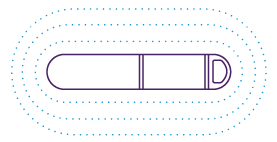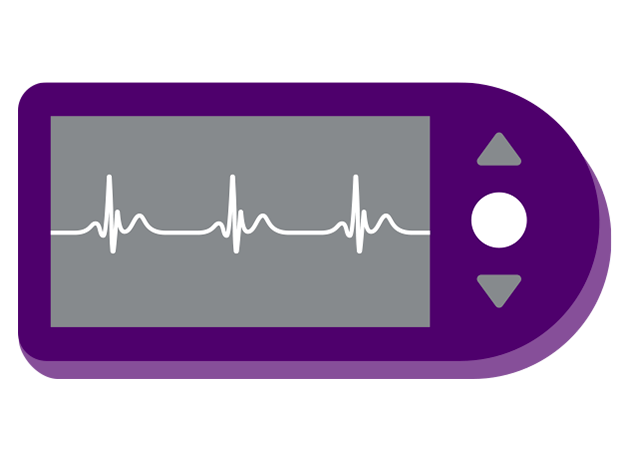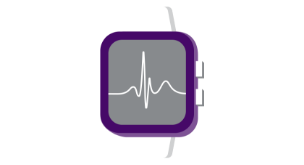Cardiac
Monitoring
Insertable Devices to Detect
Slow or Irregular
Heartbeats



Do You Have an
Irregular Heartbeat?
Cardiac monitoring can help your doctor determine if you have an irregular heartbeat and what type. Unlike other methods of monitoring, an insertable cardiac monitor (ICM) can track your heartbeat long-term, if necessary.
What Is an Irregular Heartbeat?
A heart’s rhythm (heartbeat) is normally between 60 to 100 beats per minute. If your heart beats slower or faster than 60 to 100 beats per minute—or has gaps in the rhythm—you may have an irregular heartbeat called an arrhythmia (pronounced uh-RITH-me-uh).
There are four common arrhythmias:
Bradycardia
A slow heartbeat of fewer than 60 beats per minute.
Tachycardia
A fast heartbeat of more than 100 beats per minute.
Pause
A gap in your regular heartbeat, when your heart does not beat for a few seconds.
Atrial Fibrillation (AFib)
A heartbeat that beats chaotically and/or irregularly.

What is the Most Common Irregular Heartbeat?
Atrial Fibrillation, or AFib for short, is the most common type of irregular heartbeat. Unlike other types of arrhythmias, you may not always notice symptoms of AFib. This makes an accurate diagnosis even more valuable. Your doctor may suggest cardiac monitoring to help take steps toward a diagnosis.

There Are Several Ways to Monitor Your Heart
Because an irregular heartbeat can come and go, diagnosis can be tricky. While other methods of heart monitoring only record your heartbeat for up to a month, an ICM can monitor continuously for up to 6 years.
Insertable Cardiac Monitor
An ICM—also referred to as a loop recorder—goes under the skin near your heart. The procedure is minimally invasive. The ICM will do all the work for you, and many patients do not even know it is there.


Holter Monitor
Small patches (electrodes) are placed on your chest and attached to a recording monitor that you carry around. This monitor can record your heartbeat for up to two days.
Event Recorder
This external monitor is attached to your skin and can be worn for up to for 30 days.


Wearables
Fitness wearables and smartwatches may be able to display a short history of your heart rhythm.
Using a wearable may help determine if you should speak to your doctor about more detailed and consistent monitoring with a device such as an ICM.
References
* Compared to predicate ICM devices.
- Chugh SS, Havmoeller R, Narayanan K, et al. Worldwide Epidemiology of Atrial Fibrillation: a Global Burden of Disease 2010 Study. Circulation. 2014;129(8):837-847. doi:10.1161/CIRCULATIONAHA.113.005119
- Centers for Disease Control and Prevention. Heart Disease Resources for Health Professionals - Atrial Fibrillation. Updated May 15, 2024. Accessed September 5, 2024. https://www.cdc.gov/heart-disease/about/atrial-fibrillation.html
- American Heart Association. What is Atrial Fibrillation (AFib or AF)?. Updated March 23, 2023. Accessed September 5, 2024. https://www.heart.org/en/heart-topics/atrial-fibrillation/what-is-atrial-fibrillation-afib-or-af
Bluetooth and the Bluetooth logo are registered trademarks of Bluetooth SIG, Inc.
MAT-2300135 v3.0